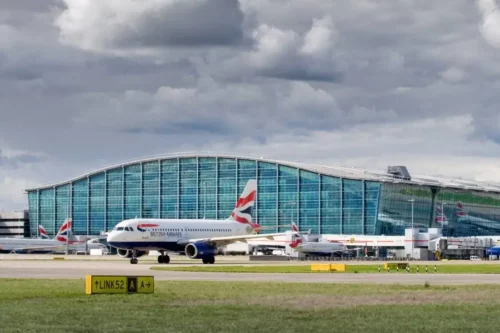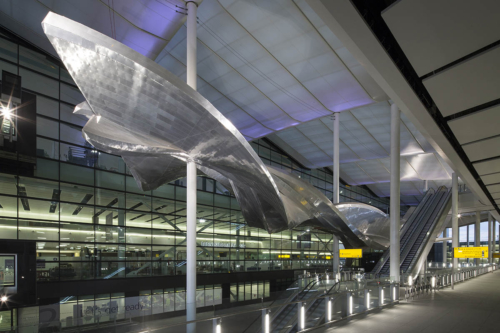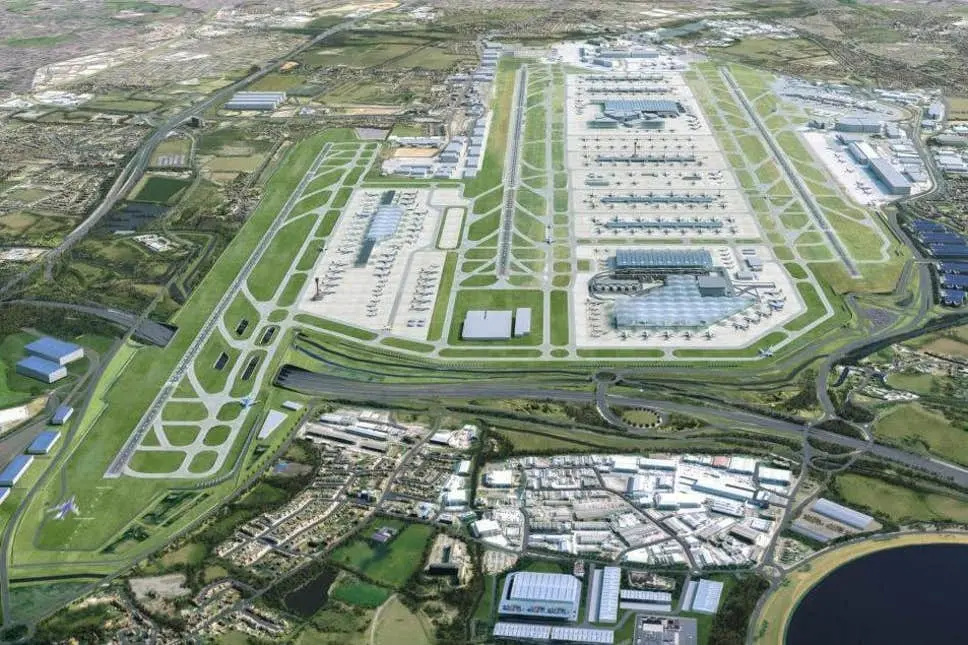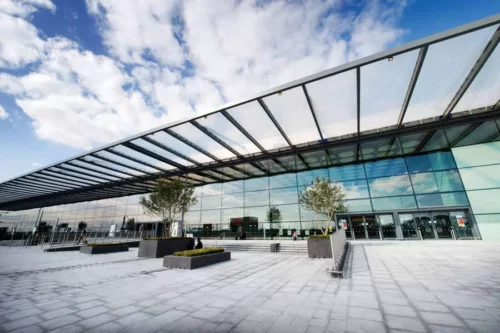Are Heathrow’s dreams of a third runway over?
Links on Head for Points may support the site by paying a commission. See here for all partner links.
Last week, I was on the BBC’s World Business Report commenting on the release of Heathrow’s 2023 results. Sadly it isn’t on iPlayer so you can’t check out my living room!
The airport is currently going through a period of change precipitated largely by an almost-full recovery from covid. Passenger numbers reached 79.2 million in 2023, not far off the 80.9 million who passed through the airport in 2019 and a big improvement from a 40-year low in 2021 of 19.8m.
Heathrow also posted its first profit since covid of £38 million, although as this interesting article by Robert Boyle (former Director of Strategy at IAG) points out, Heathrow likes to low-ball its “adjusted” profits.

For 2024 Heathrow is predicting a new record with a projected 81.4 million passengers. However whilst passenger numbers are now back to the pre-covid trajectory, there is still some catching up to do on the operational side:
- overall customer satisfaction remains 3.6% down on 2019 levels
- missed baggage connections are 0.9% higher than in 2019
- security waits of five minutes or more are up 3.2% on 2019
Arguably the most significant performance factor is departure punctuality, which is defined as being + or – 15 minutes of scheduled departure. This is down a hefty 15.1% with just 63.4% of all departures going on time. Granted, this is partly down to airline performance rather than Heathrow’s own operations but it remains a significant pinch-point at the airport.
Change isn’t just confined to the pandemic recovery. After a decade-long stint, John Holland-Kaye stepped down as CEO to be replaced by Thomas Woldbye, who comes from Copenhagen Airport. Thomas started his role in the Autumn and has kept an arguably low profile as he takes stock of the situation.
A third runway?
The biggest decision on Woldbye’s plate, of course, is whether to continue the long-term strategy pursuing a third runway.
The elephant in the room is the ownership of Heathrow. Spanish construction group Ferrovial is hoping to sell its 25% stake to Saudi Arabia’s Public Investment Fund and investment fund Ardian – which, in itself, is arguably a sign that Ferrovial believes that the third runway is dead. Under the terms of the shareholders agreement, other shareholders have the right to sell at the same price.
Current feedback is that holders representing 35% of the shares will do so. This would give Saudi Arabia and its investment partner a controlling 60% stake in the airport and may lead to further changes in strategy. Nothing is guaranteed however – it is possible that the Saudi investors may pull out when faced with the need to acquire the additional 35%.

The legal challenges of a third runway have largely gone away. In 2020, the Supreme Court overturned a judgement saying that it would be illegal based on the UK’s climate commitments, paving the way for the airport to apply for planning permission.
The airport has yet to do so and the huge cost of the third runway – predicted at £14 billion in 2014 prices – as well as the complexity of the project mean it is not an easy choice. The project would involve demolishing several villages to the north west of Heathrow and tunnelling the M25 whilst keeping it open. BA’s Waterside head office would have to go, as would many of the airport hotels on Bath Road.
It is timely that The Sunday Times reported last weekend that that “Heathrow third runway shelved as airport seeks to be ‘better not bigger’” (paywall).
Citing leaked plans, the article suggests that Heathrow could hit 96 million passengers by 2036 “if all of its initiatives can be realised” without the need for the runway. A “core” case was said to forecast a more modest rise to 86 million passengers.
Heathrow denied the reports, saying:
“The speculation in today’s Sunday Times is wrong, and the plans and actions described are not reflective of our strategy for future growth. Heathrow connects the whole of the UK to global growth, but we’re operating almost at capacity which limits the UK’s economic potential.
Of course we’re looking at how we can optimise the current airport to achieve short-term growth within our current infrastructure. Longer term, we’re reviewing our plans to make sure the airport has the capacity to drive more global connectivity for the UK economy, while boosting the resilience of our operations for our customers, increasing competition for passengers and meeting our sustainability commitments.”

How can numbers grow without a third runway?
According to The Sunday Times:
“Among the proposals to increase passenger numbers is a plan to use more buses to transport passengers from the terminal to the aircraft so that planes can be parked further afield. Other initiatives include more efficient use of the runway so that planes could take off and land closer together.
Increasing Heathrow’s annual flight cap from 480,000 to 505,000 is also under consideration, though this would require government consent.”
It’s not clear why bussing people to planes would increase the number of passengers served, because the limiting factor at Heathrow is not the number of gates but take-off and landing slots.
Short of increasing the opening hours of the airport, one of the easiest – and indeed only – ways to increase overall passenger numbers at Heathrow without a third runway would be to increase the size of aircraft that serve it. The airport already sees one of the highest concentrations of very large passenger aircraft, including A380s from BA, Emirates, Qatar Airways, Etihad and more – but there’s still plenty of potential to upgrade aircraft across the airport.
Whilst up-gauging existing flights wouldn’t expand Heathrow’s route network, it would allow more passengers per plane.
For example, if British Airways moved to an all-A321 operation at Heathrow and got rid of the smaller A320s it would increase capacity by 20%. To some extent, this is already happening with BA phasing out the A319 from its fleet and taking a larger portion of A321neos. Other airlines are up-gauging as well.
An increase in passengers would require larger terminal facilities, but that wouldn’t be a problem. There are plenty of opportunities to reconfigure Heathrow’s terminals without a third runway, including extending Terminal 2 over the former Terminal 1, something that is being enabled by the construction of Terminal 2’s new baggage system.

Once an extended Terminal 2 is open you could close Terminals 3 for redevelopment until Heathrow ends up as a ‘toast-rack’ style airport, the most efficient airport configuration. This could involve the total closure of Terminal 4 which sits in an odd position at the south of the complex.
What else is going on at Heathrow?
Whilst Woldbye ponders, Heathrow has started installing the first of 146 upgraded security scanners that mean you will no longer need to remove liquids and laptops from bags.
Whilst Heathrow will not meet the Government’s deadline of June 2024 for the full rollout, it does say there will a “continual roll-out of new lanes in 2024” including in BA’s First Wing and the Virgin Atlantic Upper Class Wing, both of which are currently closed for the upgrades.
Other investment in the airport is set to increase by 25% this year.
Meanwhile, Heathrow’s negotiated passenger service fees are set to decrease by 20% this year as passenger numbers return to pre-covid levels.
The Telegraph reports that Heathrow wants to outsource security staffing, with Heathrow’s chief operating officer Emma Gilthorpe saying that ICTS, a third-party supplier, would be in charge of overseeing it. Trolley and passenger services would also be outsourced. The proposals would save about £40 million.
Whilst Heathrow has assured staff that there would be no job losses, the Unions have threatened strike action. At the moment it’s all rather academic: any potential strikes would require a ballot of members and at least two weeks’ notice for affected dates.
Whatever the future holds, there is never a dull moment where Heathrow is concerned.








Comments (145)